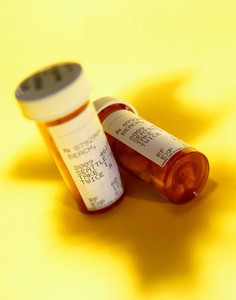Generic drug substitution constitutes a core instrument of countries’ strategies to reduce the price of drugs and expand access to health care. To that end, scholars and international organizations have encouraged adoption of a range of policy instruments that countries can use to promote the use of generics, focusing on measures to increase both the demand for and supply of such products.
Differences in countries’ practices with regard to generic drug regulation can have far-reaching implications on the supply of medicines and health outcomes. Generic drug regulations can promote (or restrict) competition and thus affect the supply of affordable treatment alternatives, for example. In addition to the price of medicines, generic drug regulations can also affect quality, as they should serve to prevent substandard drugs that may have dangerous effects – or no effects – from entering the market. Finally, in the context of increasing economic integration such as bilateral and multilateral trade agreements, a common regulatory environment for free circulation of pharmaceutical products might require harmonization of its members’ rules, which have also a direct impact on the trading activities of pharmaceutical companies. Understanding variation in regulatory standards is important for cross-border healthcare businesses and for health policy more broadly.
Despite the potential importance of policy in this area and observed differences in national practices, scholars embarking on comparative analysis lack a roadmap of which dimensions of generics policy to assess and compare. One challenge for comparative analysis is the lack of agreement on which dimensions of policy to analyse and compare. That is, despite the widely acknowledged importance of policy in this area and observed differences in national practices, scholars embarking on comparative analysis lack a roadmap of which dimensions of generics policy to assess and compare.
We present a typology of generics substitution systems, which can be used in comparative analysis and also to inform ongoing deliberations of harmonization of generics regulation. Our typology considers countries’ rules and regulations across four dimensions: (1) the demonstration of therapeutic equivalence; (2) pharmaceutical packaging and labelling; (3) drug prescription; and (4) drug substitution. We maintain that to be able to understand and compare national approaches toward generics promotion, it is crucial to carefully distinguish among these four dimensions. To understand regional differences and regulatory choices, one must clarify what the incentives and public health interests of these instruments are and also what the country’s institutional opportunities are to promote them. In a recent manuscript [1] we demonstrate these relationships and apply the typology to the case of Brazil.
Conflict of interest
The authors of the research paper [1] declared that there was no conflict of interest.
Abstracted by Elize Massard da Fonseca, Research Fellow, Institute of Education and Research (Insper), Brazil, and Professor Ken Shadlen, Department of International Development, London School of Economics and Political Science, UK
Related articles
Biosimilars help reduce the costs of cancer care
Potential cost savings from use of biosimilars in the UK
Reference
1. Fonseca EM da, Shadlen KC. Promoting and regulating generic medicines: Brazil in comparative perspective. Rev Panam Salud Publica. 2017;41:e5.
Permission granted to reproduce for personal and non-commercial use only. All other reproduction, copy or reprinting of all or part of any ‘Content’ found on this website is strictly prohibited without the prior consent of the publisher. Contact the publisher to obtain permission before redistributing.
Copyright – Unless otherwise stated all contents of this website are © 2017 Pro Pharma Communications International. All Rights Reserved.








 0
0











Post your comment